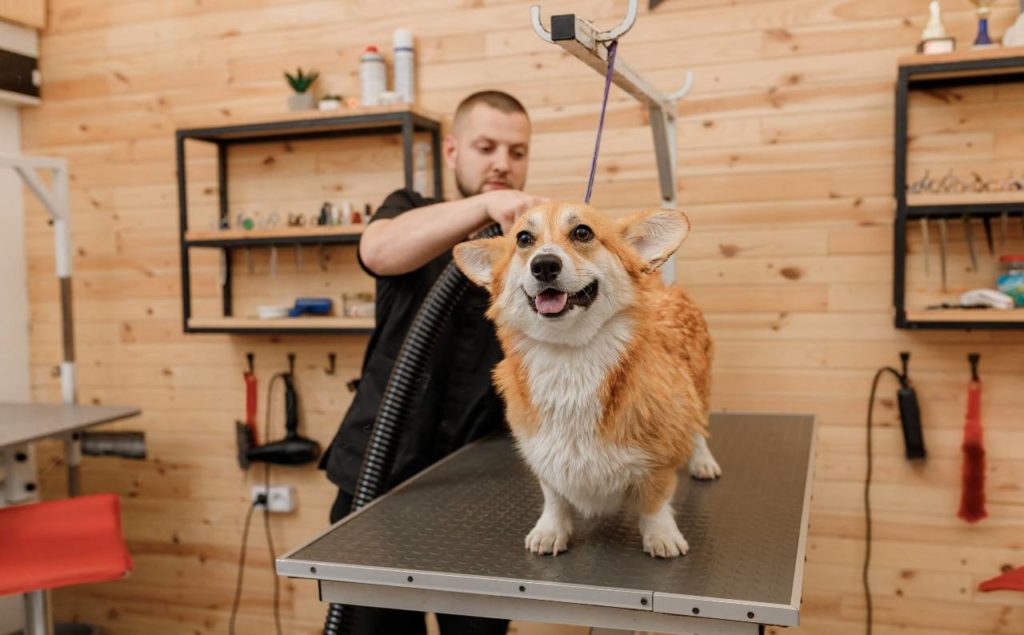Self-service advertising for small businesses

Key takeaways
- Self-service advertising allows you to set up ads without a salesperson
- Creating your own ads gives you control over your budget and ad content
- Test different advertising ideas and track what works best for your business
Promoting your small business is essential for growth, but finding the best advertising solution isn’t always easy. While print ads in the local paper might have been the go-to option at one time, today’s focus should largely be on digital advertising—80% of the U.S. population shops online, a figure that is only expected to grow over time.
To reach more potential customers online, you might want to consider self-service advertising. This type of advertising offers easy-to-use tools for business owners to create their own digital advertising campaigns. Here’s what you need to know about self-service advertising and how it can be an effective (and affordable) option for your online marketing plans.
What is self-service advertising?
Self-service advertising (also called self-serve advertising) can be achieved through any digital ad platform that lets you customize and manage your own ads without a salesperson, publisher, or long negotiation period. You alone control different aspects of your ad buys, including how much you spend and where and when your ads display.
For example, self-service advertising platforms can show digital ads to a specific audience on a website (or group of websites). Most social media platforms, product marketplaces like Amazon, and search engines offer online advertising—as do sites like Yelp and LinkedIn.
Managed service vs. self-serve ads
The two main types of online advertising are managed and self-serve.
Managed service advertising is when you hand over the reins to a sales representative or agency to oversee your ad campaigns. This person or team will create, run, and optimize your ad campaigns on your behalf. The advantage of a managed service is that you benefit from the professional experience, and you don’t have to learn how to control your campaigns.
Self-service ad platforms invite you to create and manage your own ad campaigns. With self-service advertising, you can set budgets, experiment with different headlines and images, try out different target audience settings, and track your results as you see fit.
Self-serve advertising is available on most search engines, social media platforms, and many review sites.
What are the benefits of self-serve advertising?
No one knows your business and its customers better than you do. If you learn to create your own ad campaigns, you can test different marketing strategies and make changes quickly while you figure out what works best for your brand (also called A/B testing). Having a specific target market in mind will also help you create compelling ad copy and deliver it directly to the people who are most likely to buy.
Here are some examples of how a business owner might target their digital ad campaigns to specific audiences:
- An electrician or insurance agent shows ads to people who’ve recently bought homes in a particular community
- A music store promotes its electric guitar sale to people who’ve been searching for the best prices on electric guitars
- A plumbing company tells high-value homeowners that they specialize in whole-house water softeners and jetted garden tubs
Self-service advertising allows you to learn a lot about your target audience and what causes them to take an action (like clicking on an ad). You’ll also save money by removing salespeople, have full control over the lifecycle of your campaign, and increase your ad reach through retargeting (i.e., ads that follow users across mobile, desktop, TV, and more).
How to use self-service advertising

Each self-serve advertising platform has its own system, but most advertising tools follow a similar pattern. Here’s what that looks like:
Choose a self-serve advertising platform
First, you need to decide where you’ll run ads. Search engines and social media channels are popular digital advertising options. Many local businesses choose Yelp because that’s where people go when they’re ready to buy. In fact, 97% of people make a purchase after visiting Yelp, so adding or claiming your Yelp Business Page can be crucial to gaining exposure and new customers for your business.
Select an ad goal
Customizing your call to action (CTA) on your advertising platform of choice will help you achieve the desired results from your ad campaigns. In other words: What do you want people to do when they see your ad?
Typically, you’ll choose from goals like:
- Receive more messages or calls. This is a good choice for a spa hoping to get bookings or a window installer who wants people to call for a quote.
- Generate more website traffic. An e-commerce site or travel agency might want to drive visits to its website.
- Provide directions to your business. Any business that invites drop-in traffic, like a hardware store or nail salon, might choose this option.
Most self-serve advertising providers offer a CTA button viewers can click to take the desired action. Some ad servers even use automation to selectively show your ads to the people most likely to take that action based on their past behavior.
Specify a target audience

Self-serve advertising lets you get right in front of your ideal customers—so who are they? Specifying who you want to see your ad is key to a successful campaign. Advertising platforms offer different options to help you home in on your target audience, including location, demographics, and interests.
For example, a yoga studio might advertise only to people in nearby neighborhoods where they don’t have competition. Similarly, someone starting a waxing business might target women in certain age groups, while a doggy daycare business would advertise only to pet owners.
Once you’ve chosen an ad platform, you can also look for the option to retarget people who’ve visited your website in the past or find people who are similar to your current customers.
Create an ad campaign
You don’t need to be a graphic designer to create self-serve ads. Your ad platform will already have attractive templates, so all you have to do is specify what the ad should say.
Most ad formats consist of three parts: A headline, a sentence or two of text, and an image.
Typical self-serve ad platforms let you create several different headlines, images, and body copy, tailored to the ad size available.
As the ads run, your ad provider will likely use an algorithm to track which elements perform the best, enabling you to run the most effective ads more often.
Set your budget
Most self-service advertising is set up on a pay-per-click (PPC) basis. You only pay when someone clicks on your ad to complete the goal (or CTA) you set up earlier.
You’ll be able to set a daily or monthly advertising budget for your campaign, and you can usually adjust it at any time. One of the advantages of self-serve ads is that there’s no contract or obligation. You can set a budget as high or low as you like and start/stop your ads whenever you want (though it’s worth noting that it takes time to truly evaluate the effectiveness of your ads, so give them a little time to run their course).
Track your results
Your digital advertising platform will provide you with an ad management dashboard where you can monitor your campaign effectiveness and make real-time changes based on what you see.
You’ll be able to track metrics like how many people are clicking on your ads, how much you’re spending per website visitor, and whether the people who are visiting your site are a good fit for your business.
If you’re not getting the results you want, you can make changes to your ad copy, budget, keywords, images, and any other elements you want to experiment with to see how those changes impact your results.
It’s a good idea to try different ads or different versions of the same ad to see what performs best. Sometimes just changing one word or one setting in your targeting options can have a surprisingly significant effect on your results.
Give DIY advertising a try
Self-service advertising is an effective and budget-friendly form of digital marketing, and it’s easier than you might think. A good ad platform will walk you through the setup and management processes and provide you with tools to help your ads be successful. It only takes a few minutes to get started—and you’ll have full control over your budget and be able to pause your campaign at any time.
With modest time and effort, you can create an advertising strategy that reaches your target audience and helps you achieve your business goals. There are even free online advertising strategies you can use to get in front of your customers.
The information above is provided for educational and informational purposes only. It is not intended to be a substitute for professional advice and may not be suitable for your circumstances. Unless stated otherwise, references to third-party links, services, or products do not constitute endorsement by Yelp.


